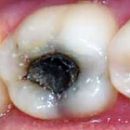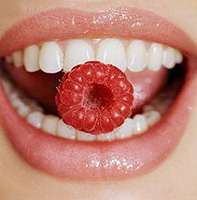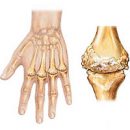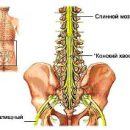What is gingivitis? What are the causes of Gingivita? What are the symptoms of Gingivita? How is the treatment of gingivitis? Answers to these questions you will find in the article.
Content
Gingivitis, reasons
Gingivitis - inflammation of the gums. The word gingivitis comes from Latin Gingiva (Desna) and ending «IT», typically characterizing the inflammatory process in medicine. Cause, or rather, the causes of the development of gingivitis are very diverse. They can be divided into internal and external.
The internal reasons include: the growth of the teeth (the growing tooth is injured by the gums), lack of vitamins (remember the classical connection between the quantity and vitamin C), the diseases of the gastrointestinal tract (all digestive departments are somehow interrelated), the decrease in immunity (for the oral cavity is special Not only common, but also local immunity) and others. causes.
 External reasons include the impact of physical (injury, burn, radiation impact), chemical (influence of aggressive substances), biological (infections) and medical (yatrogenic) factors. More often than other gingivitis causes a dented, dental flare, smoking, chemical irritation, infection. The most relevant for children and adults is the infectious gingivitis.
External reasons include the impact of physical (injury, burn, radiation impact), chemical (influence of aggressive substances), biological (infections) and medical (yatrogenic) factors. More often than other gingivitis causes a dented, dental flare, smoking, chemical irritation, infection. The most relevant for children and adults is the infectious gingivitis.
In children, they most often arise in the absence of due hygiene. The fact is that local immune defense up to 7 years is only formed, and fully its formation ends only by the beginning of the puberty period, therefore, even in the absence of chronic inflammatory foci, the risk of gingivitis in children above. Even above, he has a hearth infection in the form of caries. It is the many unthinkable carious teeth - a frequent cause of gingivitis. Gingivitis are also common in children suffering from rheumatism, tuberculosis, diabetes mellitus, diseases of the liver and gallbladder, nephropathies, etc.
Quite often, the gingivitis is a symptom of any local or general disease of the body, but may occur and isolated.
Typically, the gingivitis flows without disrupting the integrity of the sedental connection. Gingivitis can be common when the gums are inflamed at a high outlet (the entire gums of one jaw or both jaws are amazed), and localized (the gums are amazed on a small segment from one or more teeth).
According to the external signs of inflammation, catarrhal, hypertrophic, ulcerative and some other (mixed) gingivities. According to external manifestations (clinical picture), they allocate acute and chronic gingivitis.
Symptoms Gingivita
Clinic of acute gingivitis gives classic signs of inflammation: swelling, redness, local increase in the temperature of the gum, soreness, violation of the normal gum function. Against this background, the bleeding of the gums is observed and even their ulcerations.
Chronic gingivita clinic does not give a bright picture of all signs of inflammation. Almost always observed hyperplasia (the growth of tissues) gums, which leads to a partial or complete coating of a tooth crown. Normally, the crown must be free.
It is important that gingivitis is quite often only a sign of periodontitis (inflammation of the tissues surrounding the root of the tooth, bone fabric of the alveoli and gums) or periodontal (while inflammation is expressed weaker than destructive processes). The fact is that the basic symptoms of periodontalisas - gingivitis, the selection of the pus from Alveol, the formation of a pathological gantry pocket, atrophy of the alveolar process of jaw, development of a bite.
Treatment of Gingivita
Treatment of gingivitis etiotropic, t.E. aims to eliminate the cause of the main disease that caused gingivitis. It is mostly applied to local treatment, but it is necessary to remember that the treatment of diseases of other organs also contributes to a speedy recovery. For example, if the gingivitis is caused by the disease of the gastrointestinal tract, the treatment is reduced not only to the cavity of the oral cavity, but also the treatment of the underlying disease. In addition, gums should be protected from injuries. For example, the teeth with gingivitis are treated conservatively to not injure the gums. The gums themselves are treated with various antiseptics and antibacterial drugs (hydrogen peroxide, furaciline solution, lysozyme, etc.). In the case of increased bleeding, the gums are treated with manganese, bubble solutions, including grave champs. Sometimes you have to resort to ointments and even injections of drugs.









